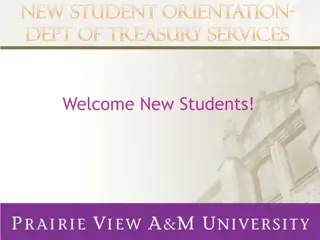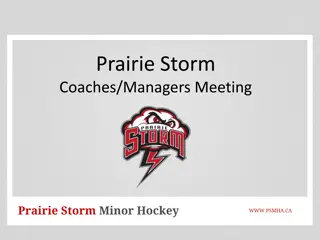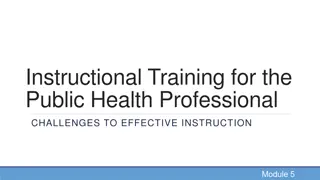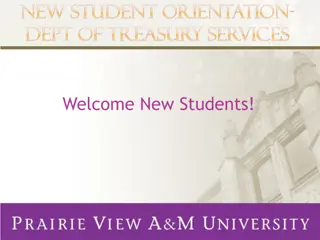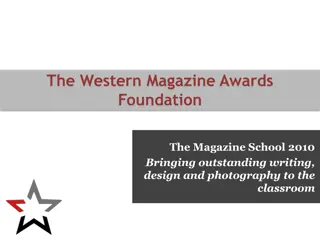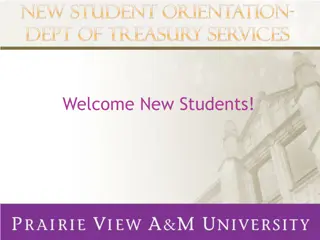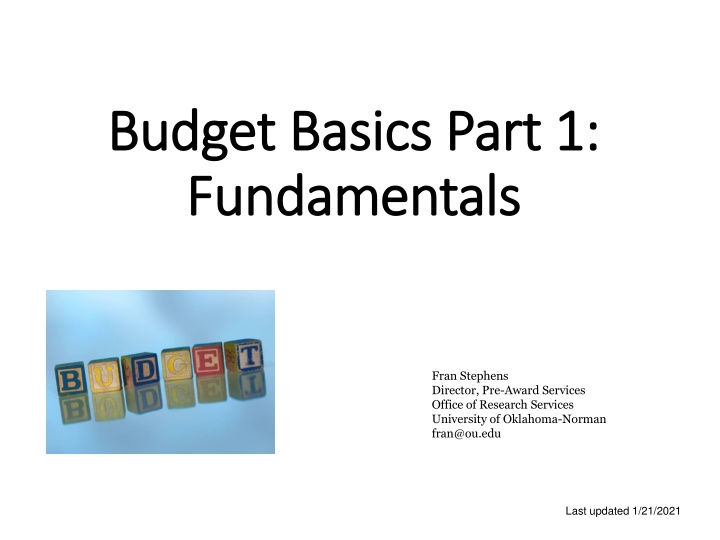
Student Work at Westcott House: Prairie Style Furnishings
Student-designed cardboard furnishings inspired by Frank Lloyd Wright's Prairie style at the Westcott House in Ohio. Discover a table, bookshelf, toy box, and bench created for this unique museum exhibition.
Download Presentation

Please find below an Image/Link to download the presentation.
The content on the website is provided AS IS for your information and personal use only. It may not be sold, licensed, or shared on other websites without obtaining consent from the author. If you encounter any issues during the download, it is possible that the publisher has removed the file from their server.
You are allowed to download the files provided on this website for personal or commercial use, subject to the condition that they are used lawfully. All files are the property of their respective owners.
The content on the website is provided AS IS for your information and personal use only. It may not be sold, licensed, or shared on other websites without obtaining consent from the author.
E N D
Presentation Transcript
Budget Basics Part 1: Budget Basics Part 1: Fundamentals Fundamentals Fran Stephens Director, Pre-Award Services Office of Research Services University of Oklahoma-Norman fran@ou.edu Last updated 1/21/2021
Budget Basics Part 1 Budget Basics Part 1 Objectives Objectives Understand some basic budget considerations. Apply basic cost principles to specific budget examples. Understand the four key cost principals.
Proposal Budget Considerations Proposal Budget Considerations A good budget is easily understood, reflects the needs of the project, and complies with the appropriate guidance (OMB, sponsor, and institution). Be aware of what limitations or requirements are provided in the Request for Proposal (RFP), Solicitation, or Guidelines. Budget construction needs to be done so that the budget can be used by the PI and post award with as few adjustments as possible. Keep in mind that at proposal submission the budget is your best guess ; most sponsors will allow some change (but be reasonable). Also be aware that some sponsors will not allow change (or major change) from the submitted budget even if they are only asking for an estimate. Your budget and budget justification can be a determining factor on selection for award does it show that you know what you are doing as you plan to project paying for the work you are proposing to do? (Are you asking for the right amount?). A slip shod cost proposal may indicate to a review panel that you won t pay attention to detail when it comes to managing expenditures.
Proposal Budget Considerations Proposal Budget Considerations Different types of proposals may have different budget requirements and elements. Types of Proposals Federal Non-Federal State or local government Foundation/Non-Profit Industry International Subcontract/Subaward Internal Awards
Cost Principles (Overview) What are Cost Principles Direct Costs Indirect Costs (IDC) also commonly referred to as Facilities and Administrative Costs (F&A) or Overhead
What are Cost Principles Institutions that receive federal funds for research must abide by federal Cost Principles . The principles are designed to provide that the Federal Government bear its fair share of total costs. Provides that federal funding is treated on par with other sponsors. It should be noted that most agencies (non-profit and commercial entities) also follow many of the federal guidelines on cost principles in their grants management operations.
OMB Circulars/CFR Title 2 A circular is a federally mandated set of principles and guidelines used to determine costs applicable to grants and contracts. The Office of Management and Budget (OMB) issues circulars/regulations that are applicable to various organizations. In 2004 an area of the Code of Federal Regulations (CFR) was established (Title 2) as the location of policy guidance for grants and other agreements.
OMB Circulars/CFR Title 2 These are the old circular numbers that you may still hear about occasionally but they have been replaced. 2 CFR part 220 (Circular A-21): Cost Principles for Educational Institutions 2 CFR part 215 (Circular A-110): Uniform Administrative Requirements for Grants and Agreements With Institutions of Higher Education, Hospitals, and Other Non-Profit Organizations 2 CFR part 230 (Circular A-122): Cost Principles for Nonprofit Organizations Circular A-133: Audits of States, Local Governments, and Non-Profit Organizations
Circular A-81 Effective Dec 2014 the Office of Management and Budget activated the Uniform Administrative Requirements, Cost Principles, and Audit Requirements for Federal Awards from the Office of Management and Budget (2 C.F.R. 200) superseded requirements from OMB Circulars A 21, A 87, A 110, and A 122 (which have been placed in 2 C.F.R. Parts 220, 225, 215, and 230); Circulars A 89, A 102, and A 133; and the guidance in Circular A 50 on Single Audit Act follow up (it is often called the Uniform Guidance [UG]or Circular A-81 or the Omni-Circular)
Direct Costs Expenses identified specifically with a particular sponsored project, instructional activity, creative or artistic pursuit, or other institutional activity Expenses that can be assigned to a particular sponsored project with a high degree of accuracy Must be allowable, allocable, reasonable & necessary for the program, given consistent treatment and conform to sponsor limitations
Direct Costs-Allowable Allowable Is it a project related expense? Does it conform to the limitations or exclusions in the OMB/CFR guidance for your organization? Does it meet sponsor guidelines? Does it comply with institutional policies?
Direct Costs-Allocability Allocability Is the cost easily assignable to the proposed work the Primary Investigator is projected to accomplish? If a cost benefits two or more activities then you need to determine the costs for each one based on the proportional benefit; if you can t determine the proportion then the basis of allocation must be reasonable. (work with sponsors) Costs allocable to a project can t be shifted to another project to eliminate deficits or for convenience.
Direct Costs-Reasonable Reasonable Would an average person agree that this cost is reasonable and necessary for the work to be performed?
Direct Costs-Consistently Treated Consistently Treated Are the same types of expenditures treated in similar ways regardless of the sponsor? (consistency) Are any exceptions covered under institutional policy?
Lets talk Dr. Smith is approaching the last three months of their grant and realizes there is a large amount of unspent funds so they decide to purchase a new spectrum analyzer to use on the grant for $45,000. This would possibly violate which of the cost principles? A. Allowability B. Allocability C. Reasonable
Facilities & Administrative Costs Costs incurred for common or joint objectives which cannot be allocated to a specific direct cost activity Facilities (lab and office space) Salaries of administrative, clerical staff, custodian, HR staff, etc. Libraries and other common buildings Building maintenance, utilities The University of Oklahoma has a federally negotiated rate agreement that is required to be used on all sponsored projects. Some sponsors and PI will refer to F&A/IDC as overhead, profit, funny money, a second tax etc. This is usually because they don t understand what F&A/IDC is. F&A/IDC is covered in more detail in Budget Basics Part 3 At OU, your Proposal Development Specialist (PDS) will help ensure you are using the correct rate and that your OU budget template will have the rate loaded on it.


